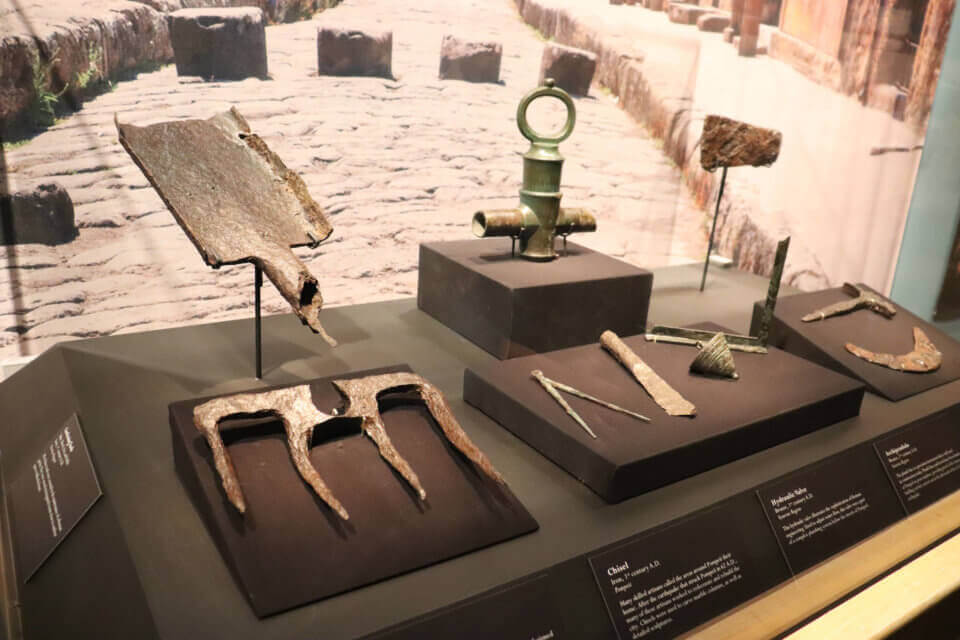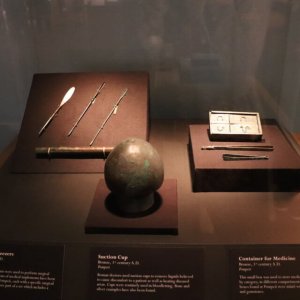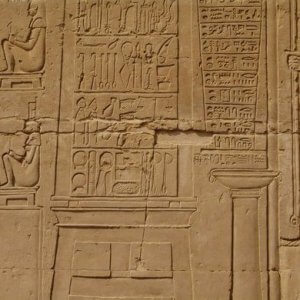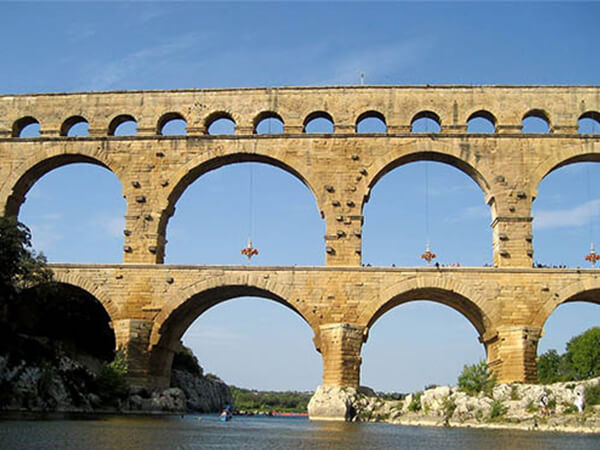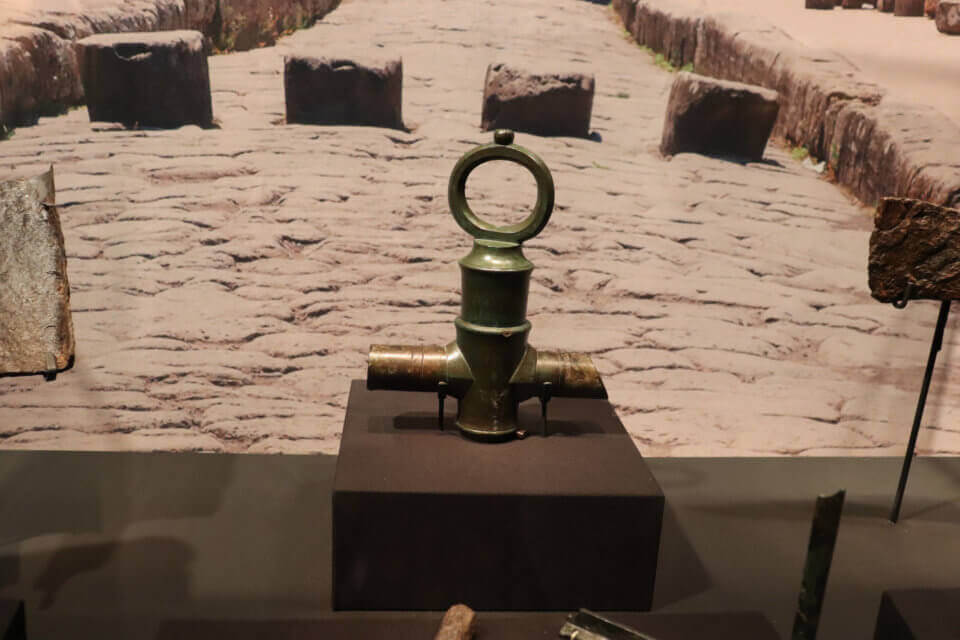
5 inventions adopted by the Romans from ancient civilizations
 28. 02. 2022
28. 02. 2022

Thousands of years after its demise, ancient Rome is well known for its sophisticated engineering tactics and advanced technology. From building hundreds of roads for thousands of miles to maintaining water supplies for millions of people. Roman engineers passed on to the ancient world the technology they found in the forgotten libraries and archives of much older civilizations: Atlanteans, Sumerians, Egyptians, Mayans… Let's recall the 5 inventions that the Romans revived in their time.
1. All roads lead to Rome
To this day, we say that: "All roads lead to Rome." This saying was especially true during the peak of the Roman Empire, when 50000 km of roads came out of the capital. The people of Rome used various engineering techniques to survey, clean and level the soil, suitable for direct roads between cities. In addition, tunnels and bridges were built along their roads, along with pedestrian paths. Due to the extensive network of roads, military personnel were able to cover the country extremely quickly. Citizens could easily travel thanks to the directional signs and the goods were traded efficiently.
The Roman road network was used as a tool to help conquer and retain vast amounts of land, and the engineering techniques used by the Romans were used as the basis for many modern roads throughout Europe.
2. Revolutionary running water
The Romans used their aqueducts to revolutionize running water. The capital Rome had 11 aqueducts supplying its inhabitants with water. This source of water not only helped maintain a huge population, but also enabled public hygiene and sanitation.
The Roman aqueducts were designed to approach the city at a decreasing angle, called the gradient. The slope of these aqueducts had to be calculated from a very large distance, some reaching a length of up to 65 km. Their management in the nature of the landscape had to be absolutely perfect, regardless of its relief. To make this possible, Roman engineers had to dig tunnels through the mountains and form retaining stone walls so that the pipes or troughs could lead through deeper terrain.
Once the water reached the city, it was routed to various collection tanks that supplied citizens with drinking and bathing water. The famous Roman Trevi Fountain uses water from one of the aqueducts (Aqua Virgo) of the ancient city to this day. He had to build, or rather reconstruct Marcus Vipsanius Agrippa in 19 BCE.
3. Medicine on the battlefield
Despite the risk of injury in the war, the soldiers of ancient Rome often lived longer than the average citizen. It is because medical advances dating back to the history of ancient Egypt, which Roman physicians have learned from previous civilizations.
Roman field doctors contributed to the increased remediation of military camps and conducted physical examinations of new soldiers. Field surgeons used various surgical instruments familiar from Egyptian history. We can get this simple fact, for example, on the walls of an Egyptian temple Come on, whose ruins have survived to this day.
- Roman surgical instruments
- Egyptian surgical instruments
4. Roman arches
Although the arches existed thousands of years before ancient Rome, Romans attribute historians to the revolution in their construction by academically using them to build colonnades, aqueducts, bridges and other buildings. Whether the Romans were always and in all circumstances the authors of the buildings, or just abolished restorers or simple users, historians do not modestly state.
Ancient engineers probably created wooden frames in the shape of an arch and built stone masonry according to this template. The most central stone at the top of the arch is called the foundation stone, and the wooden frame was removed once the foundation stone was placed in place. The weight is transferred from the foundation stone through the other stone wedges of the outer frame of the arch, creating a powerful tool that ancient architects used in their buildings and monuments.
5. Concrete has passed the ravages of time
Concrete has passed the test of time. By using lime and volcanic rock, for example, the ancestors were able to create a beautiful mortar, which can be seen thousands of years later.
Concrete was revolutionary in ancient architecture for several reasons. First, the concrete is very flexible and takes shape. Second, pouring concrete into molds did not require much skill compared to cutting stone, so concrete was much cheaper. Finally, concrete was simply stronger and more time efficient compared to previous building methods used in antiquity.
The Romans were again inspired by the great skills of the Egyptians, who cast entire blocks of blocks. Inexperienced archaeologists are easily fooled. Therefore, it is important to have an experienced, incorruptible geologist within reach.
6. Water valve
(And one extra invention!) It seems common to today's man to come to the bathroom and turn on the tap to allow cold or hot water to flow. It may come as a surprise to you that our ancestors had similar comfort at the time of Rome, for example.
Archaeologists are again mistakenly admitting the abbreviation that the invention of the closable valve is the work of the Romans alone. They have a simple but very short-sighted argument for this: "Find me something older…" You always have to be careful in fast trials. Our ancestors certainly used to (unlike our time) build things to serve for centuries. This does not mean that they had to use materials that will withstand the ravages of time at all times.
Even the valves themselves are often found only as a torsion without the remaining piping.
History hidden in volcanic ash
Much of what is known about ancient Rome, comes from Pompeii, a Roman city frozen during the eruption of Mount Vesuvius in 79 ACE.





 1
1